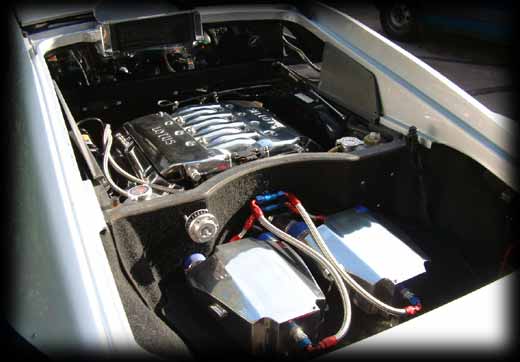
Once we started to discuss engine modifications, it was agreed that twin charge-coolers would be installed. This would get the charge temperature under control and enable the turbo boost to be increased. MHR then designed the installation and looked into areas of restriction within the existing set-up.
Each turbo has been re-worked/balanced and has a larger compressor housing and trim wheel. The turbos also have a 360ê thrust bearing to ensure that they are fully lubricated while spinning at higher speeds.
The existing 2Bar MAP sensor was replaced with a 3Bar version and a ‘faster’ IAT sensor was also fitted. The Lambda sensor were replaced with Bosch/MoTeC motorsports versions. A high-flow marine pump drives the charge-cooler water circuit. This pump displaces approx. 5 gallon per minute.
The clutch has been upgraded to an AP Racing 4 paddle carbon-metallic unit.
The fabricated plenum is designed to replace the restrictive compressor ducting on the original engine. It also allows the boost to equalise much more effectively before the main throttle body.
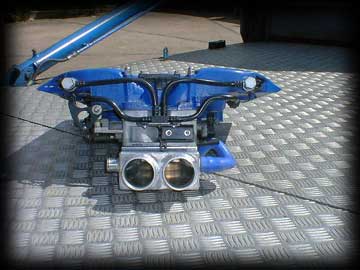
The charge-cooler circuit has a header tank in the engine compartment. Coolant is pumped through the charge-cooler bodies, then through aluminium pipes under the car to the radiator that it placed directly in front of the main radiator.

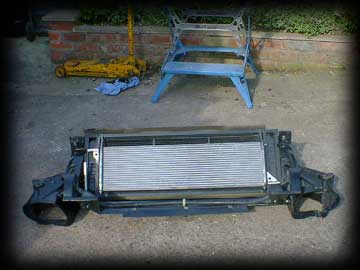
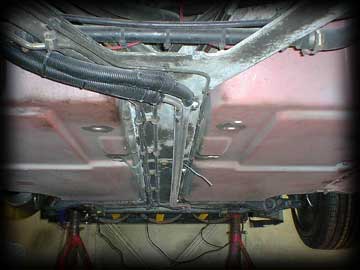
It was felt that the throttle would benefit from an additional spring load to ensure that it closed quickly and firmly when released. This spring is anchored to the charge-cooler pump bracket.
The dump valve or Blow Off Valve is simply designed to vent off any unwanted boost back pressures on throttle release. It is an adjustable piston type valve.
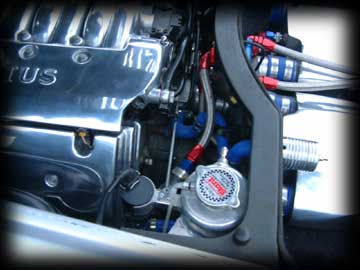
The original intention was to have some switchable boost settings. Due to the restrictions placed on the software inside the Lotus (EFI) ECU, this was not practical/possible. When the boost was increased, it was found that the standard ECU started to enrich the fuel at 0.62bar (fuel dumping). This condition is not at all healthy and the boost was returned to standard. Through charge-cooling alone with the engine on standard boost, the maximum power output was raised to 405bhp.
This figure is some way shy of the desired output so it was agreed to switch to a fully configurable MoTeC M800 system. This would allow total freedom and control over all aspects of the engine management settings. MHR designed the necessary changes to the wiring loom and relays. Where possible the existing sensors were to be re-used. MHR had already installed a 3 bar MAP and also a faster IAT sensor.
Modifications were designed is such a way that the set-up could be returned to use the standard ECU if required.
The MoTeC Engine Management maps can be prepared remotely and downloaded into the ECU or (re)configured while connected. The MoTeC software for interrogation, monitoring and maintenance runs on a laptop.
The MoTeC ECU is mated to a MoTeC Advanced Dash Logger (ADL). This is a modular data logging device combined with a user defined dash display configuration. The ADL replaces all of the existing Lotus instrumentation. A number of screens are configured to display all the required engine/driver information. The shift lights are configured at 200rpm increments as the maximum rev limit is approached.
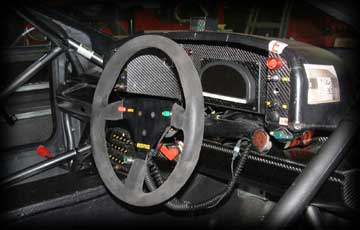

Initial Dyno report (Lotus EFI ECU):
There were lots of problems in managing to secure the car to the rollers. On the initial calibration run the car was squirreling around all over the place, spinning and slipping. On this run due to the slippage, it only registered 261bhp at the wheels.
On the second run it registered 370bhp at the wheels, which gives a calculated flywheel figure of 405bhp. The output was achieved on standard boost, as the Lotus ECU is programmed to starts enrichment (dump fuel) at exactly 0.62bar. All in all it was a good result, but highlights the fact that you can only do so much with the standard Lotus ECU.
Dyno report with MoTec M800:
Once again, there were some problems in securing the car on the rollers.
The boost was set to 0.70 bar and the engine developed 425bhp. On a second run the boost was increased to 0.75 bar and this time the engine developed 445bhp. In order to preserve the transmission, it was agreed to leave this as a the power output. The engine can develop a lot more, but it was felt that the transmission and driveability would suffer from more power.
Race Engine
The race engine is significantly different from the standard road engine. In simple terms the block is the same, but pretty much everything else is different. To offer some perspective – in GT2 form (with 30.4mm inlet restrictors), the engine develops 575bhp at 1.0 bar boost. The engine required an overhaul after 45 hours of use under race conditions. There are a number of significant modifications required to install the race engine in a road car and currently there are no plans to do so.
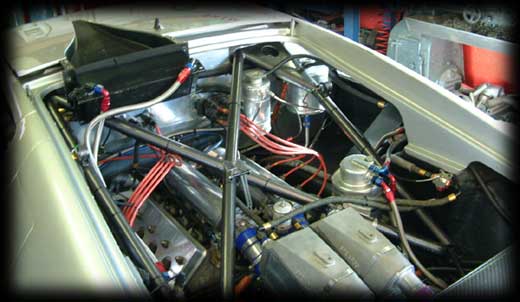
Transmission
The race car employs a Hewland TGT sequential gearbox. This is totally unsuitable for a road car and is also very expensive. Alternatives have been investigated and include:
1) SADEV straight-cut internals within existing UN1 casing
2) Porsche G50 hybrid
3) Latest Quaife sequential, with helical gears
The standard transmission was to be retained for now, but will be replaced on failure. The transmission oil cooler has been added to preserve the existing transmission. The transmission oil cooler pump (Mocal) is controlled by a heat sensor and fits directly to the transmission casing. In any case the transmission cooler will also be used in conjunction with the new transmission.
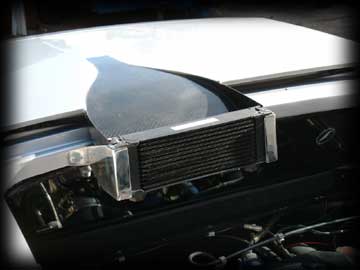
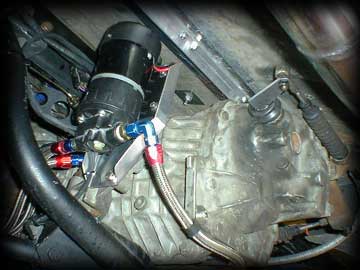
|
|